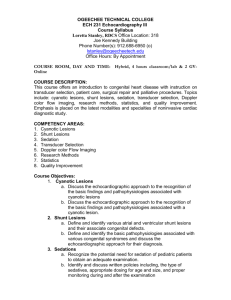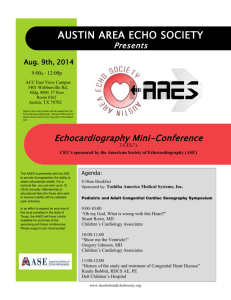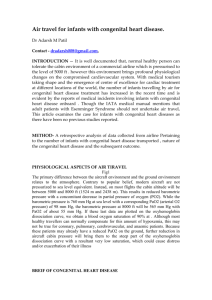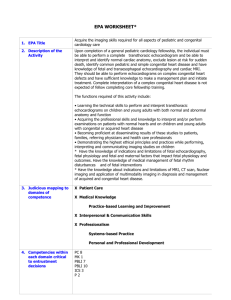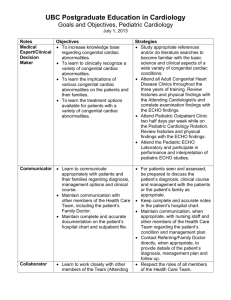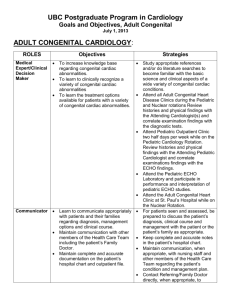Lecture # 10: Fluid and electrolyte balance in children and newborns
advertisement
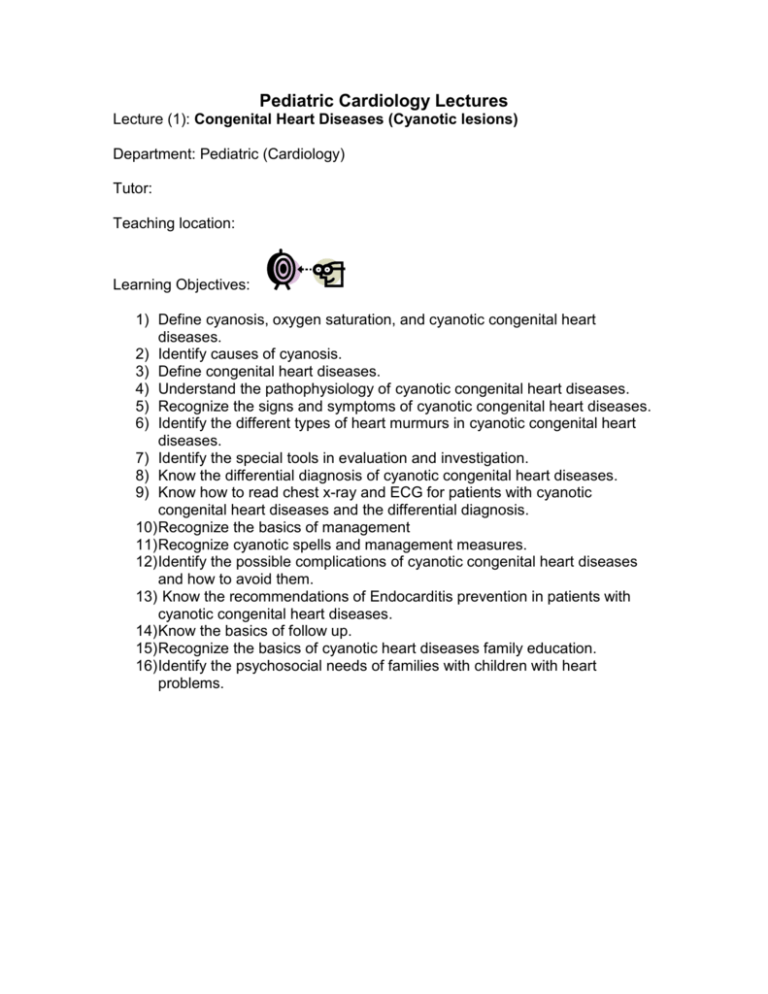
Pediatric Cardiology Lectures Lecture (1): Congenital Heart Diseases (Cyanotic lesions) Department: Pediatric (Cardiology) Tutor: Teaching location: Learning Objectives: 1) Define cyanosis, oxygen saturation, and cyanotic congenital heart diseases. 2) Identify causes of cyanosis. 3) Define congenital heart diseases. 4) Understand the pathophysiology of cyanotic congenital heart diseases. 5) Recognize the signs and symptoms of cyanotic congenital heart diseases. 6) Identify the different types of heart murmurs in cyanotic congenital heart diseases. 7) Identify the special tools in evaluation and investigation. 8) Know the differential diagnosis of cyanotic congenital heart diseases. 9) Know how to read chest x-ray and ECG for patients with cyanotic congenital heart diseases and the differential diagnosis. 10) Recognize the basics of management 11) Recognize cyanotic spells and management measures. 12) Identify the possible complications of cyanotic congenital heart diseases and how to avoid them. 13) Know the recommendations of Endocarditis prevention in patients with cyanotic congenital heart diseases. 14) Know the basics of follow up. 15) Recognize the basics of cyanotic heart diseases family education. 16) Identify the psychosocial needs of families with children with heart problems. Detailed content: Introduction to the cardiovascular anatomy and function Discuss the definition of cyanosis, and oxygen saturation Discuss the possible causes of cyanosis and the differential diagnosis Discuss the difference between cyanosis caused by obstructive lesions, mixing lesions, and right to left shunt lesions. Discuss the possible causes of cyanotic congenital heart diseases. Discuss the role of Patent ductus arteriosus (PDA) and patent foramen ovale (PFO) during fetal life and after delivery. Identify important examples of cyanotic CHD such as Tetrallogy of fallot, pulmonary stenosis, and Tricuspid atresia. Associate and link the pathophysiology to the cardiac clinical presentation. Introduce the basic tools for diagnosing cardiovascular lesions. Discuss the differential diagnosis. Discuss the complications and the appropriate measures to avoid them Provide illustration diagrams of the different cyanotic cardiac lesions Provide questions and answers Reading Pediatric Cardiology for the practitioners, by Myung K. Park Nelson: Pediatrics textbook
